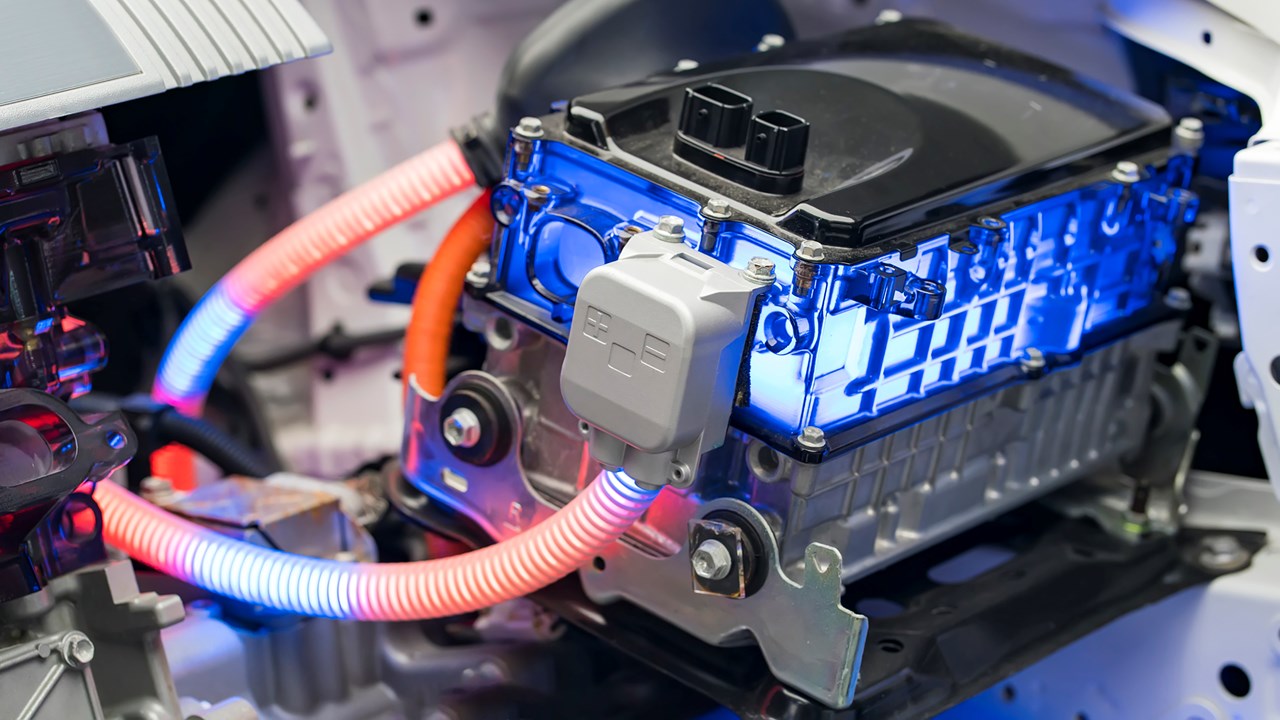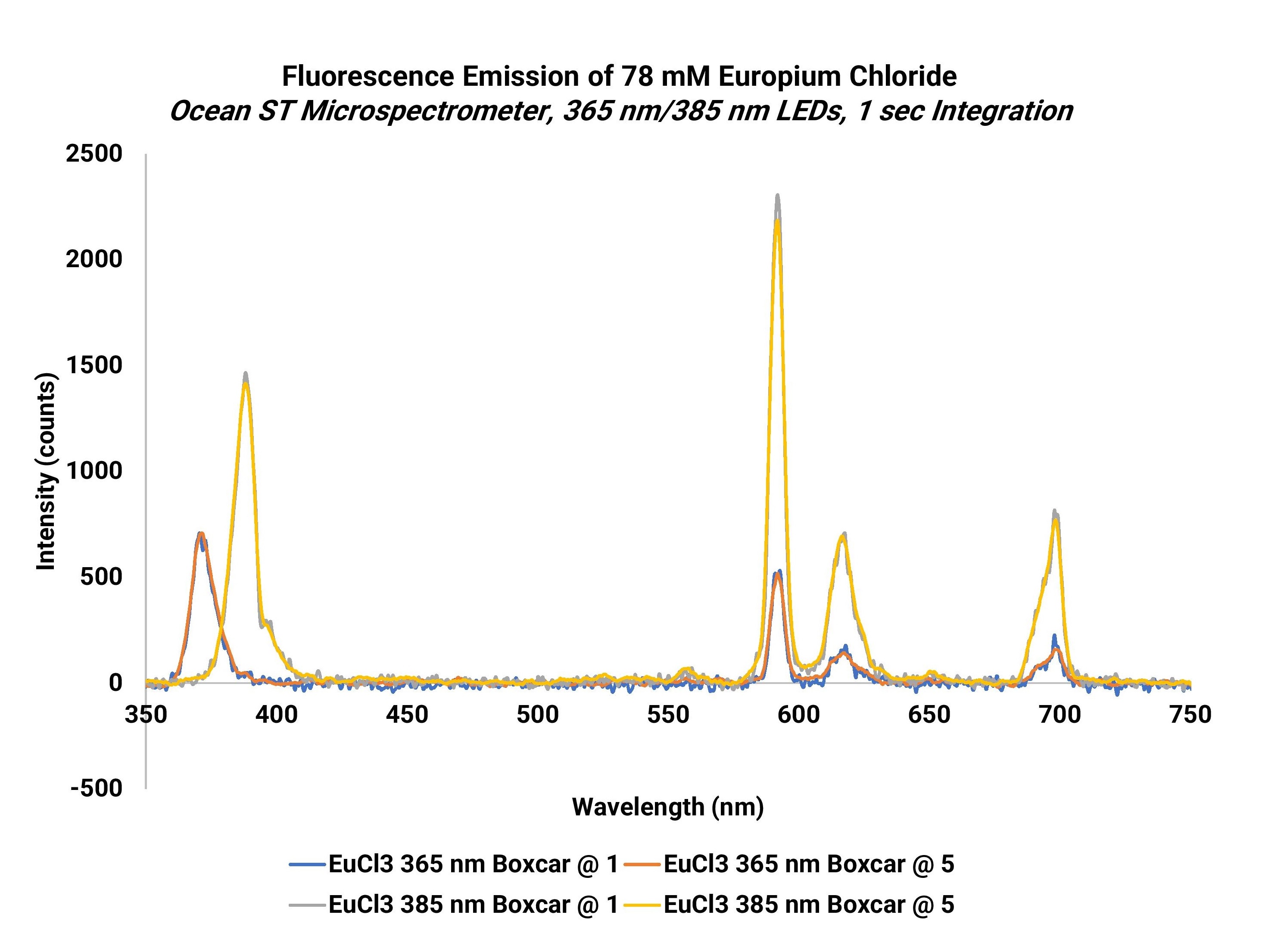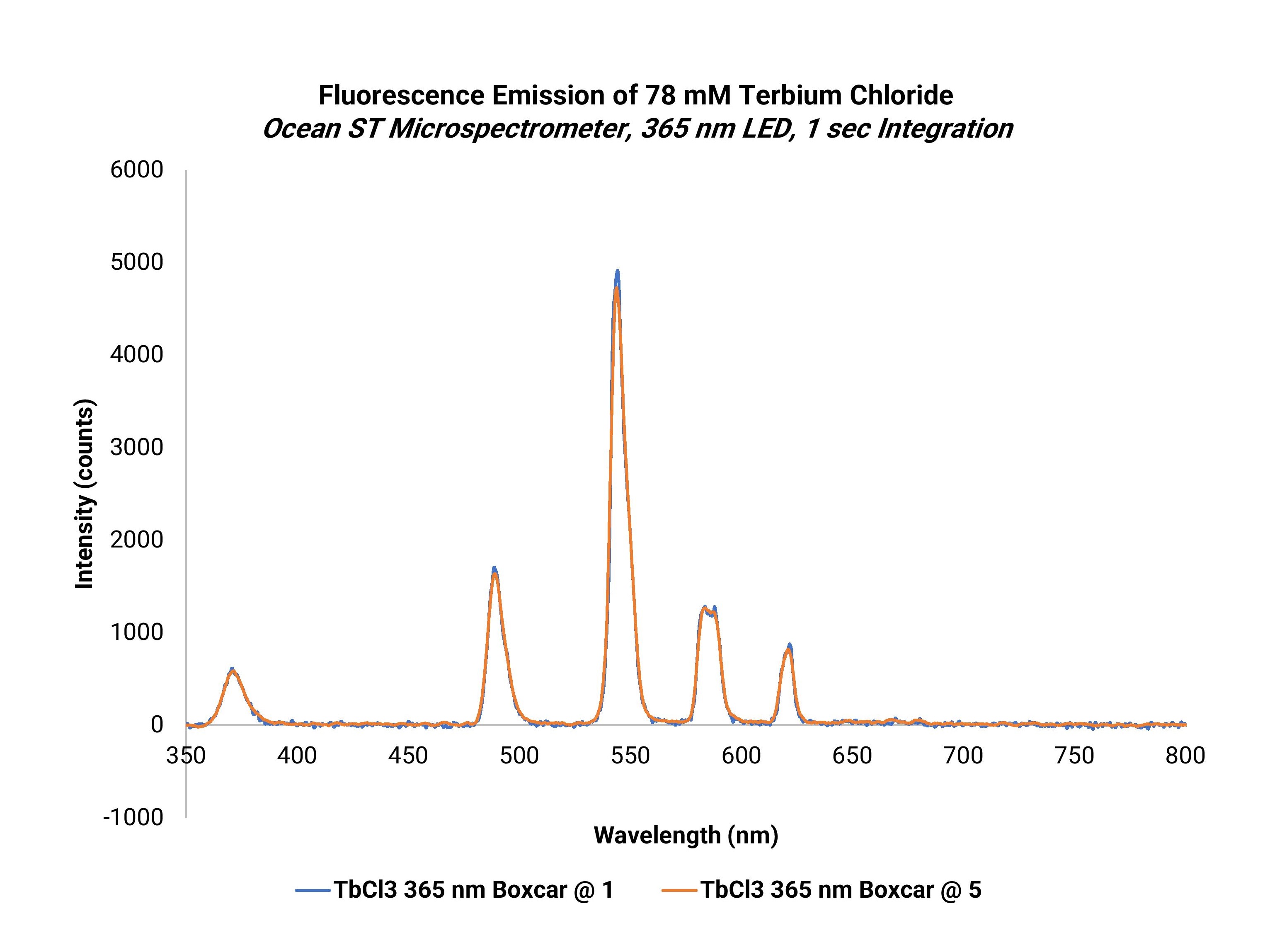Subscribe to Our Blog
Receive updates from our team as we share application notes, customer spotlights, educational tools, spectroscopy how-to’s, and more.

The Ocean ST microspectrometer provides application flexibility without the trade-offs typical of comparable spectrometers. We demonstrate fluorescence measurements of the rare earth salts Europium chloride and Terbium chloride, used in the manufacture of batteries for electric vehicles and in electronic devices such as cell phones.
IMPORTANT: PLEASE REFRESH YOUR BROWSER IF YOU DO NOT SEE ANY IMAGES/SCREENSHOTS/SPECTRA ON THE PAGE.
Ocean ST is a powerful microspectrometer that provides excellent UV response, high-speed spectral acquisition, and high signal to noise ratio (SNR) performance in an ultra-compact footprint. Unlike comparable spectrometers, Ocean ST is versatile enough for applications ranging from absorbance of DNA/RNA samples and color measurement to fluorescence of chemical compounds and plasma monitoring.
In this application note, we demonstrate fluorescence measurements of the rare earth salts Europium chloride (EuCl3) and Terbium chloride (TbCl3).
Rare earth salts including EuCl3, TbCl3 and Samarium chloride (SmCl3) are chemical compounds with myriad uses in research and industry, including in the manufacture of batteries for electric vehicles (like the photo at the top of this page), in lighting products, and in portable electronic devices such as cell phones.
Rare earth metals and salts often are measured using expensive techniques like mass spectrometry, which may be inaccessible to some users or too complex to manage easily. In these instances, a powerful yet simple device like the Ocean ST microspectrometer provides an appealing and viable alternative.
EuCl3 is an inorganic compound used primarily in research, and its reddish glow when stimulated to fluorescence makes it attractive for use in certain lighting products.
To measure the fluorescence response of a 78 mM concentration EuCl3 solution, we used an Ocean ST-VIS microspectrometer (350-810 nm) with Ocean Optics LSM LEDs (365 nm and 385 nm) and LDC-1 controller. The solution was sampled in a 1 cm quartz cuvette in a holder, with the LED beam positioned at 90° to the sample. Optical fibers were 400 µm diameter on the excitation side and 200 µm diameter on the collection side. With a liquid sample in a cuvette holder, a bifurcated fiber also could be used.
An advantage of a modular spectroscopy setup is that one can easily swap out components to optimize measurements. For example, in these measurements we tested both 365 nm and 385 nm excitation wavelengths to compare the emission response for each, and then applied boxcar averaging at different averages to the results (Figure 1).

Figure 1. An Ocean ST microspectrometer measures the fluorescence response of Europium chloride. System flexibility allowed us to optimize excitation wavelengths and boxcar averaging.
Boxcar smoothing is a technique that averages a group of adjacent detector elements across spectral data. The greater the boxcar width value, the smoother the data and the higher the SNR. If the value entered is too high, a loss in spectral resolution will result and peaks will become flattened. The SNR will improve by the square root of the number of pixels averaged.
TbCl3 is a chemical compound. Its bright fluorescence (a greenish glow) makes TbCl3 a desirable component of green phosphors for lighting and LCDs. Using a similar setup as described earlier, we measured the fluorescence of a 78 mM concentration TbCl3 solution in a 1 cm quartz cuvette, with our focus on 365 nm LED excitation. Ocean ST-VIS integration time was set for 1 second (integration times can be set from 3.8 ms-6 s) and boxcar smoothing was applied at 1 and 5 averages. Results are shown in Figure 2.

Figure 2. When excited with a 365 nm LED, the Terbium chloride solution revealed a strong fluorescence peak near 550 nm.
The Ocean ST microspectrometer is an all-purpose option for several types of measurements. In addition to the fluorescence measurements demonstrated here, the Ocean ST is an especially good choice for these applications:
What application are you considering? Ask Application Sales Engineer today.
Ocean ST-VIS microspectrometer (350-810 nm) delivers full spectral analysis at a performance level comparable to costlier large-bench spectrometers.
Options available
LSM series LED light sources are ideal for fluorescence excitation and other measurements requiring narrowband illumination. UV options are available for 310 nm, 365 nm and 385 nm wavelengths.
Prices From $725.00
Options available
OceanDirect is a powerful device driver platform with API for control of Ocean Insight spectrometers.
Prices From $625.00
Options available
Quartz Cuvettes are suitable for use from 170-2700 nm and are available in different pathlengths and filling volume capacity.
Prices From $127.00

Receive updates from our team as we share application notes, customer spotlights, educational tools, spectroscopy how-to’s, and more.